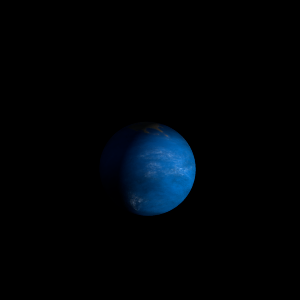|
|
Space Astro
|
Info for exoplanet "Noegaeon"
| Scientific (actual) data |
|---|
| Name | Kepler-1269 b |
| Planet status | Confirmed |
| Radius | 0.145 |
| Orbital period | 37.3332 |
| Discovered | 2016 |
| Updated | 2021-02-05 |
| Tconj | 2455000 |
| Publication | Announced on a website |
| Detection type | Primary Transit |
| Alternate names | 2MASS J19111333+4520259 b, K02530.01, KIC 9011825 b, KOI-2530 b, KOI-2530.01, WISE J191113.33+452025.9 b |
| Star name | Kepler-1269 |
| Right ascension | 287.81° |
| Declination | 45.34° |
| Mag j | 12.498 |
| Mag h | 12.23 |
| Mag k | 12.218 |
| Star distance | 710 |
| Star metallicity | 0.07 |
| Star mass | 1.1 |
| Star radius | 1.15 |
| Star age | 3.55 |
| Star temperature | 5998 |
| Star alternate names | 2MASS J19111333+4520259, KIC 9011825, KOI-2530, WISE J191113.33+452025.9 |
| Wikipedia article | Kepler-1269 b |
Back
| |
| Fictional info (?) |
|---|
| Suggested name | Noegaeon |
| Planet type | Cold planet |
| The carbonyl sulfide has probably photodissociated, and the free nitric oxide has been swept into interplanetary space by the solar wind because of the lack of a formaldehyde layer. |
| Atmosphere | Nitric oxide | 50% |
| Hydrogen peroxide | 44% |
| Carbonyl sulfide | 5.2% |
| Formaldehyde | 0.18% |
| Carbon dioxide | 2.0E-6% |
| Atmospheric pressure | 80 bar |
 |
| No known satellites |
| Google search for Noegaeon |
|
Website by Joachim Michaelis
|
|
|
|